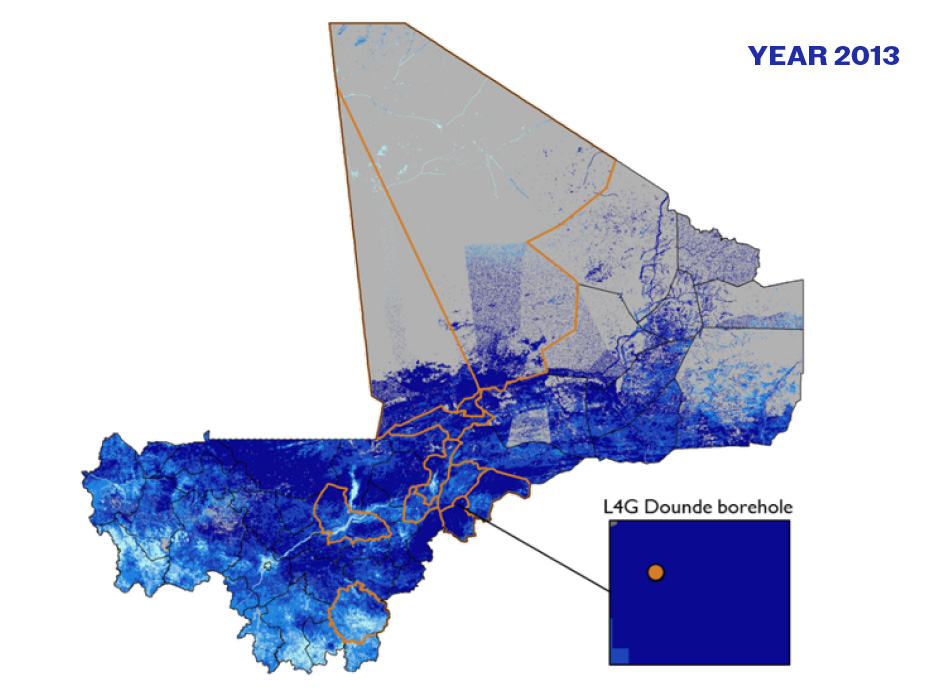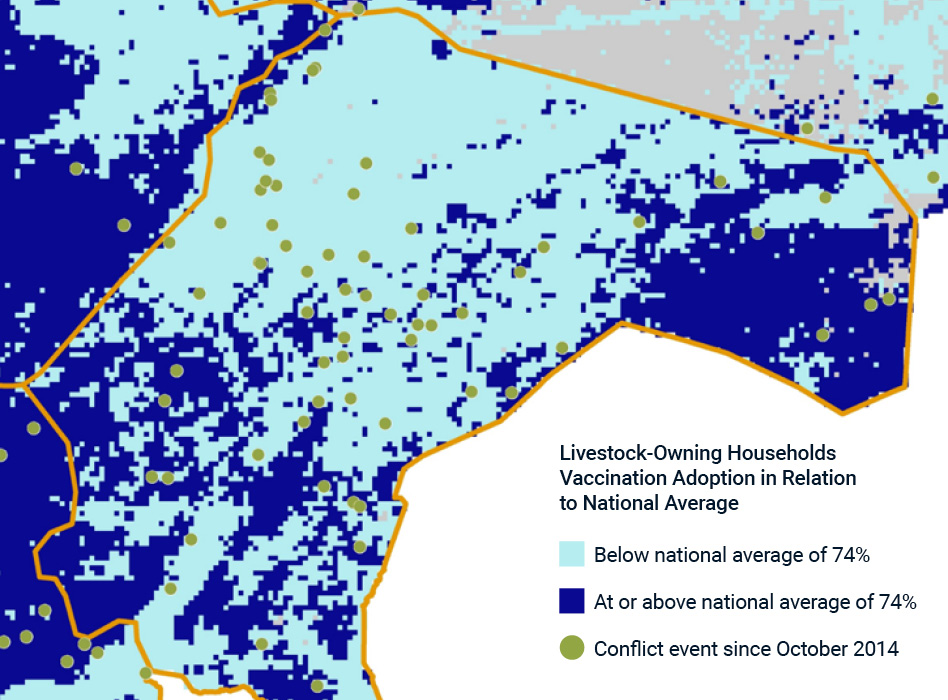Build Effective Social and Behavior Change Strategies

In 2014 USAID began the Livestock for Growth (L4G) program to assist Mali’s livestock owners. Over the next five years, DT Global worked with Malian partners to raise livestock productivity, provide veterinary training and services, improve water sources, and establish sustainable Farmer Field Schools (FFS) in rural communities where conflict has become a growing risk in recent years.
Fraym partnered with DT Global to provide insights into how livestock-owning households have changed over the course of the L4G program. Leveraging machine learning techniques to weave together household survey microdata, remotely sensed data, and satellite imagery, Fraym’s hyper-local analysis of the L4G program helped DT Global understand program outcomes and can inform decisions about future programming and resource allocation.
Fraym divided this analysis into three phases: a high level before and after look at livestock-owning households, an analysis of livestock health and access to services, and an analysis of conflict in relation to L4G program areas.
A) Before Analysis

B) After Analysis

Areas near a borehole in the Dounde community, which had been improved by the L4G program (i.e. equipped with solar-powered pumps, water storage tanks, animal drinking troughs and water spigots for people), saw a decrease in the percentage of livestock-owning households that rely on unimproved water sources.
This borehole and several other improved boreholes provide livestock-owners and near-by residents a cleaner and safer alternative to the water they relied upon before from streams, rivers, and unprotected wells.
Livestock-owning households also saw improvement in access to animal health services through DT Global’s innovative partnership and training programs.

The proportion of livestock-owning households that used these L4G trained private veterinarians for vaccination and deworming services in target program areas increased from 48% in 2014 to more than 60% in 2017, just three years into the project. In Bankass cercle (pictured here), 83% of livestock households vaccinated animals in 2017, more than 10% higher than the average across other target program areas.

Fraym overlaid conflict events (ACLED) since October 2014 against animal health indicators in program areas, such as Koro cercle.
The L4G team was able to maintain a high level of engagement with local livestock-owning households in Koro cercle despite conflict, and the percentage of livestock-owning households that vaccinated some livestock animals almost doubled from 43% in 2013 to 73% in 2017.
Fraym analyzed how indicators related to water and sanitation, education attainment and literacy, vulnerability to shocks, and food security changed over time in Mali generally and program areas.ugiat.
Fraym found that target program areas in general experienced improvements in access to safer and more reliable water sources.
Access to animal health services
Conflict in relation to program areas
%
Livestock Vaccinated in 2013
%
Livestock Vaccinated in 2017
Fraym’s analysis of the L4G program testifies to our powerful evaluation capabilities, especially in areas that are difficult to access because of violence or other barriers. Leveraging existing, regularly updated conflict and open-source data helped put the security situation around L4G program sites in perspective and helps to explain why some locations had positive socio-economic development despite upward trends in inter-community conflict and violence. In Mali and elsewhere, geospatial data can now put robust evaluation tools within reach of development organizations in environments where it was previously very difficult or even unattainable.
Click this link to see more details about USAID’s L4G program implemented by DT Global in Mali.

“Fraym’s post L4G program geospatial analysis demonstrates a clear ability to provide unique insights.
For example, overlaying the L4G program-sponsored Farmer Field School (FFS) sites with animal vaccination rates gives a clear geographic representation of FFS sites that have been the most effective in encouraging and facilitating livestock-owning households to bring their cattle, sheep and goats to the sites for vaccination services. This could be used to direct L4G field staff to priority locations.”